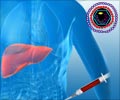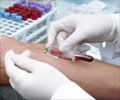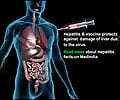In kids the clusters of acute severe hepatitis are diminished, but researchers stress parents to pay attention to children’s personal hygiene to keep the liver disease away.

Pediatric Hepatitis: Facts
Pediatric hepatitis is rare, and doctors were alarmed when they started seeing outbreaks of severe unexplained hepatitis. There have been about 1,000 cases to date; 50 of these children needed liver transplants and at least 22 have died.Once they returned to school, children were more susceptible to infections with these common pathogens. The study suggests that for a small subset of these children, getting more than one infection at the same time may have made them more vulnerable to severe hepatitis.
“We were surprised by the fact that the infections we detected in these children were caused not by an unusual, emerging virus, but by common childhood viral pathogens,” said Charles Chiu, MD, PhD, professor of laboratory medicine and medicine in the Division of Infectious Diseases, director of the UCSF Clinical Microbiology Laboratory, and senior author of the paper.
Prevention Strategies for a Severe Hepatitis Outbreak Linked to Common Childhood Viruses
“That’s what led us to speculate that the timing of the outbreak was probably related to the really unusual situations we were going through with COVID-19 related school and daycare closures and social restrictions,” Chiu said. “It may have been an unintended consequence of what we have experienced during the last two-to-three years of the pandemic.”By August 2022, clusters of cases were reported in 35 countries, including the U. S., where 358 cases were under investigation. The Centers for Disease Control and Prevention (CDC) launched an investigation into the causes.
To conduct the study, which was backed by the CDC, researchers used polymerase chain reaction (PCR) along with various metagenomic sequencing and molecular-testing methods to examine plasma, whole blood, nasal swab and stool samples from 16 pediatric cases in six states — Alabama, California, Florida, Illinois, North Carolina and South Dakota — from Oct. 1, 2021, to May 22, 2022. The specimens were compared with 113 control samples.
In genotyping the 14 available blood samples, adeno-associated virus 2 (AAV2) was detected in 93% of the cases and human adenoviruses (HAdVs) were found in all the cases; a specific type of adenovirus linked to gastroenteritis (HAdV-41) was found in 11 cases. Additional co-infections with Epstein-Barr, herpes and enterovirus were found in 85.7% of cases.
Advertisement
Since AAVs are not considered pathogenic on their own, a direct causal link with the severe acute hepatitis has yet to be established. The study notes, however, that children may be especially vulnerable to more severe hepatitis triggered by co-infections. While infections from adeno-associated viruses can occur at any age, the peak is typically between 1 and 5 years old, and the median age of the affected children in the study was 3 years old.
Advertisement















